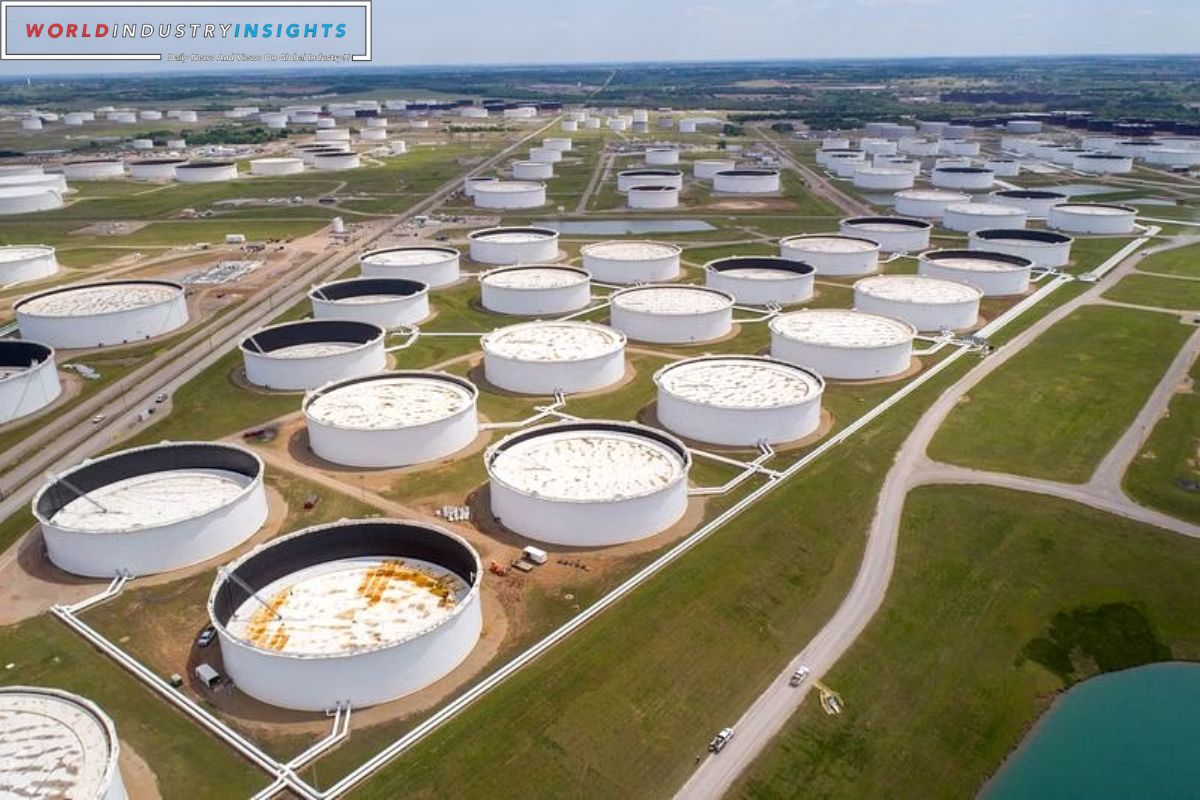US Oil Production Hits Record: Coincidence has dealt a powerful blow to OPEC as Angola’s shocking exit collides with record-high US oil production. Brace yourself, because the impact is about to reverberate through the global oil market.
The United States, flexing its energy muscles, has shattered previous production records, leaving OPEC trembling in its wake. As you delve into this intricate web of market dynamics, prepare to witness an analytical spectacle that will leave you craving mastery.
The unanticipated departure of Angola from the OPEC alliance raises crucial questions about the cartel’s stability and influence. With the US oil industry surging forward, it’s time to dissect the implications of this record-breaking achievement and explore the potential consequences for oil prices, market dynamics, and even the policies of the Biden administration.
Get ready, because the energy world is in for a wild ride.
Key Takeaways
- US oil production has reached a record high, establishing the country as a major player in the global oil market.
- Angola’s exit from OPEC highlights potential lack of unity within the organization, making it difficult to implement production cuts.
- Increased US oil production has added to the supply glut in the market, challenging OPEC’s dominance.
- Monitoring trends in US oil production and market outlook is crucial for understanding the potential impact on the oil market in the coming months.
Also Read: Oil Prices Reach Highest Level : Since April as Saudi Arabia and Russia Extend Production Cuts
Overview of U.S. Oil Production and Market Impact
As you examine the impact of US oil production hitting a record high amid Angola’s shock OPEC exit, it becomes clear that the overview of US oil production and its market impact is crucial.
The recent surge in US oil production hasn’t only contributed to a decline in crude-oil futures but has also cooled the oil rally. With petroleum supplies building up and domestic production reaching unprecedented levels, the United States is making its mark as a major player in the global oil market.
This surge in production has also raised concerns within the OPEC cartel, as they fear losing market share to non-OPEC producers like the United States. As a result, it’s imperative to closely monitor the trends in US oil production and understand its market impact in order to make informed decisions in this rapidly changing landscape.
Price Action & Market Drivers
To understand the impact of US oil production hitting a record high amid Angola’s shock OPEC exit, let’s delve into the price action and market drivers.
The recent decline in oil prices can be attributed to a combination of factors. Firstly, concerns over global economic growth have led to a decrease in demand for oil. Slowing growth in China and trade tensions between the US and China have raised fears of a global economic slowdown.
Secondly, the increase in US oil production has added to the supply glut in the market. The shale revolution has allowed the US to become a major player in the global oil market, challenging the dominance of OPEC.
Lastly, geopolitical tensions in the Middle East, such as the recent drone and missile attacks, have also contributed to the volatility in oil prices.
As we move forward, it will be crucial to closely monitor these price action and market drivers to understand the future trajectory of oil prices.
US Oil Production Hits Record And Market Outlook
Moving forward from the previous discussion on price action and market drivers, let’s now delve into the market outlook amid US oil production hitting a record high and Angola’s shock OPEC exit. The combination of these two factors has the potential to significantly impact the oil market in the coming months.
Here are three key points to consider:
- Increased US oil production: With US oil production reaching a record high, we can expect a surge in supply. This could put downward pressure on oil prices as the market becomes flooded with excess crude.
- Angola’s OPEC exit: While Angola’s departure from OPEC may not be a major concern on its own, it does highlight a potential lack of unity within the organization. This could lead to a breakdown in cooperation among members, making it difficult to implement production cuts and stabilize prices.
- Potential price volatility: Given the conflicting factors at play, we can anticipate a period of uncertainty and volatility in the oil market. Prices may experience a slow and choppy upward trend as market participants navigate through the shifting dynamics.
Expert Opinions and Analysis
The article ‘The’ expertly analyzes and offers insight into the impact of US oil production hitting a record high and Angola’s sudden OPEC exit.
The rise in US oil production is a significant development that challenges OPEC’s dominance in the global oil market. With this record output, the United States is becoming a major player, capable of influencing oil prices and exerting pressure on OPEC members.
Angola’s exit from OPEC may not have a substantial impact due to its limited oil production, but it highlights the growing discontent within the organization. OPEC’s market share is already under threat from non-OPEC producers, and the surge in US production further intensifies this competition.
Moreover, geopolitical conflicts and disruptions in shipping routes add to the complexity of the oil market, potentially leading to higher prices. The situation remains uncertain as OPEC cuts and the potential slowdown of the US economy create a tug of war for the future direction of crude oil.
As a result, investors and industry experts should closely monitor these developments to make informed decisions in this volatile market.
With the recent surge in US oil production and Angola’s unexpected exit from OPEC, several factors are influencing oil prices and raising concerns about OPEC’s declining global market share.
Increased US oil production: The rise in US oil production has flooded the market with excess supply, putting downward pressure on prices. This surge in production is driven by advancements in technology, such as hydraulic fracturing, which has allowed the US to tap into previously inaccessible reserves.
Effects of Biden’s policies on oil: President Biden’s focus on clean energy and climate change has raised concerns among oil producers. The potential for restrictions on drilling permits and a shift towards renewable energy sources could further impact domestic oil production and decrease dependence on foreign oil.
Angola’s exit and OPEC concerns: Angola’s departure from OPEC has weakened the organization’s influence on oil prices. Combined with OPEC’s own production cuts and increased competition from non-OPEC producers, such as Russia, OPEC’s global market share has declined. This raises concerns about OPEC’s ability to control oil supply and stabilize prices.
Conclusion
The record-breaking surge in US oil production amidst Angola’s unexpected exit from OPEC has sent shockwaves through the market. As prices react to these game-changing events, it’s clear that the US is cementing its position as a dominant player in the global oil landscape.
With the Biden administration’s focus on renewable energy and climate change, the future of oil remains uncertain. OPEC must adapt swiftly to regain its lost market share, or risk fading into irrelevance.
Our Reader’s Queries
What is the US record for oil production in 2023?
Currently, the United States is leading the world in oil production, with a daily output of 13.5 million barrels. This impressive number is expected to rise to 14 million barrels soon, setting a new record for the country. In fact, it may even be the highest oil production ever achieved by any country.
When did US oil production peak?
In 1971, the United States experienced a peak in oil production, confirming his assumption. However, with the emergence of oil shale technology, the industry experienced a resurgence in the 2010s.
When was the US the largest oil producer in the world?
In 2018, the United States took the crown as the world’s leading crude oil producer, a position it has held onto through 2022. American oil refineries source crude oil from both domestic and foreign sources. A variety of companies contribute to the global crude oil supply.
Is US oil production increasing or decreasing?
Following a record increase in U.S. crude oil production in 2023, our projections indicate a slower growth rate in 2024 and 2025. Despite this, we anticipate new production records to be achieved during these years. The production of U.S. crude oil is heavily reliant on rig activity and well-level productivity to counteract the natural decline of existing wells.




